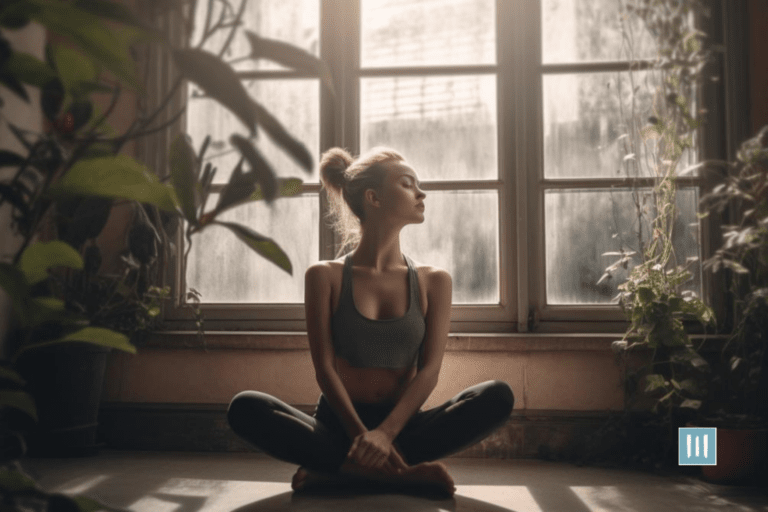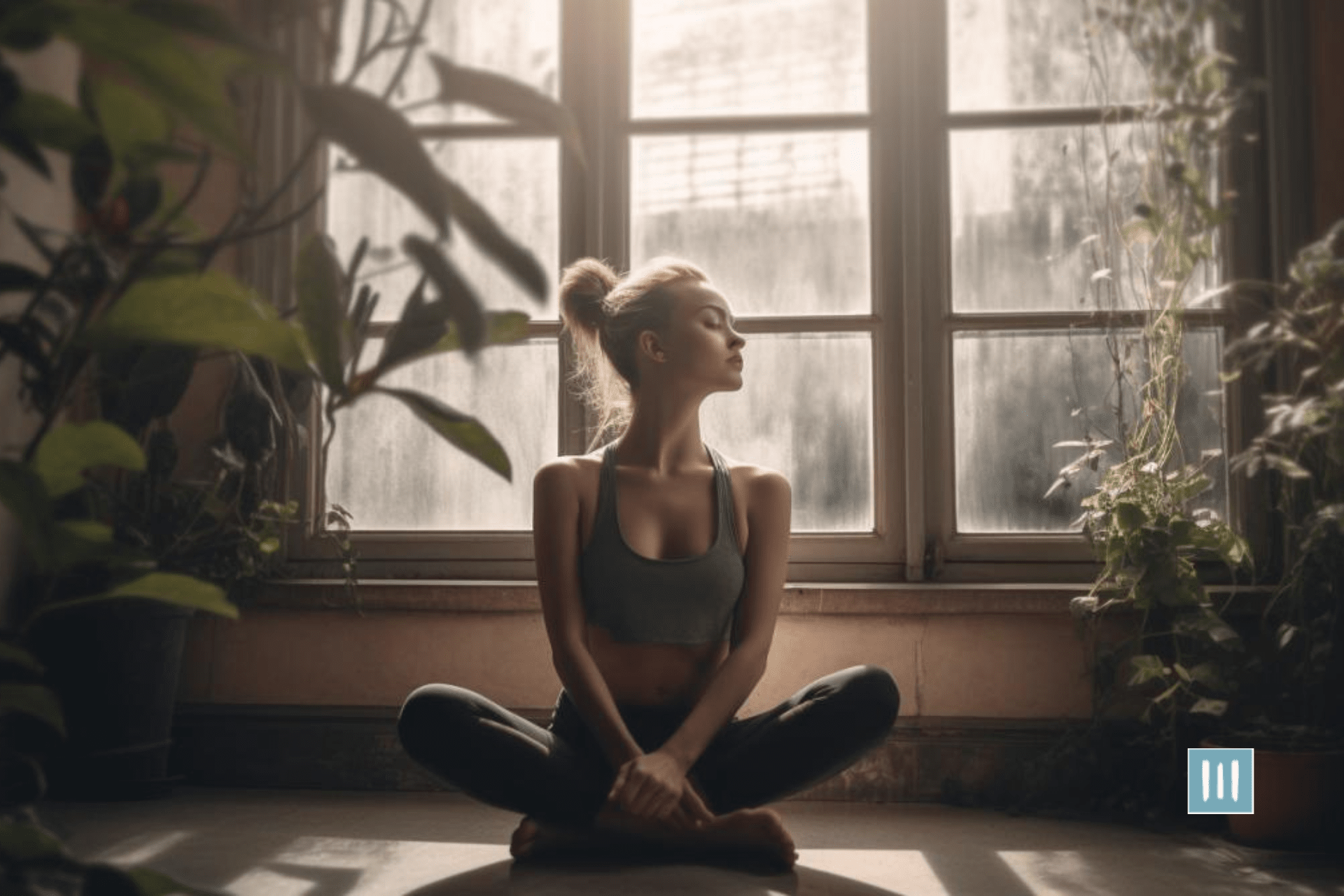Are you feeling overwhelmed by the stresses of everyday life?
Do you find yourself constantly seeking inner peace and relaxation?
If so, practicing yoga for stress reduction may be just what you need.
Yoga offers a holistic approach to calming the mind, soothing the body, and finding a sense of inner peace amidst the chaos of the world around you.
Through yoga, you can learn to cultivate mindfulness, focus on the present moment, and let go of worries and anxieties that may be weighing you down.
By incorporating breathing techniques and yoga poses specifically designed for stress relief, you can release tension, improve your mood, and create a sense of calm within yourself.
So, if you’re looking to find inner peace and reduce stress in your life, consider adding yoga to your daily routine and experience the transformative effects it can have on your overall well-being.
Key Takeaways
- Yoga helps to calm the mind, soothe the body, and find inner peace
- Breathing techniques can promote relaxation and reduce stress levels
- Specific yoga poses like Child’s Pose and Corpse Pose can aid in stress relief
- Incorporating yoga into daily routine can help maintain balance and tranquility throughout the day
Benefits of Yoga for Stress Reduction
If you’re feeling overwhelmed, did you know that practicing yoga can reduce stress by lowering cortisol levels? This was shown in a study that found a 27% decrease in cortisol levels after a yoga session.
Yoga is not just about physical movements; it’s a holistic practice that focuses on the mind, body, and spirit. By practicing yoga regularly, you can improve your mental clarity, increase your self-awareness, and cultivate a sense of inner peace that can help you navigate through stressful situations with ease.
When you engage in yoga, you are not only benefiting yourself but also those around you. By finding inner peace through yoga, you are better equipped to handle the challenges of daily life, which allows you to show up as your best self for others.
Imagine the impact you can have on your loved ones, colleagues, and community when you radiate positivity and calmness that stems from your regular yoga practice. Yoga is not just a personal journey; it’s a way to serve others by being a beacon of light and tranquility in a world that can often feel chaotic.
Practicing Mindfulness through Yoga
When it comes to practicing mindfulness through yoga, remember to focus on your breath and stay present in the moment. As you flow through each pose, pay attention to the sensation of your body moving and the rhythm of your breath. By staying fully engaged in the present moment, you can cultivate a sense of inner peace and calmness that transcends the stresses of everyday life.
To help you further understand the importance of mindfulness in yoga, here is a table that illustrates the connection between breath, body, and mind:
| Breath | Body | Mind |
|---|---|---|
| Deep, slow | Relaxed muscles | Quiet thoughts |
| Smooth | Balanced | Focused |
| Steady | Grounded | Present |
By focusing on your breath, aligning your body, and calming your mind, you can truly experience the transformative power of mindfulness through yoga. Embrace this practice as a way to serve yourself by finding inner peace and reducing stress in your life.
Breathing Techniques for Relaxation
To truly unwind and relax, try using the simple yet powerful breathing techniques that’ll make you feel like you’re floating on a cloud of calmness.
Here are four breathing techniques that can help you find inner peace and reduce stress:
- Deep Breathing: Take a deep breath in through your nose, allowing your belly to expand, hold for a moment, and then exhale slowly through your mouth. Repeat this process several times to calm your mind and body.
- 4-7-8 Breathing: Inhale deeply for a count of 4, hold your breath for a count of 7, and exhale slowly for a count of 8. This technique can help regulate your breathing and promote relaxation.
- Alternate Nostril Breathing: Close one nostril with your thumb and inhale deeply through the other nostril, then close that nostril with your finger and exhale through the opposite nostril. This technique can help balance your energy and clear your mind.
- Breath Counting: Simply focus on counting your breaths as you inhale and exhale. This mindfulness practice can help you stay present and calm your thoughts.
By incorporating these breathing techniques into your daily routine, you can tap into a sense of inner peace and serenity that’ll help you navigate through life’s challenges with grace and poise.
Remember, taking care of yourself is the first step in being able to serve others effectively.
Yoga Poses for Stress Relief
Discover how certain poses can help you find calmness amidst chaos. When life feels overwhelming, taking a few moments to practice yoga can make all the difference. By engaging in specific poses designed to relieve stress, you can cultivate a sense of inner peace and serenity. These poses not only benefit your physical body but also have a profound impact on your mental and emotional well-being.
Here is a table showcasing five yoga poses that are particularly effective for stress relief:
| Pose | Benefits | Instructions |
|---|---|---|
| Child’s Pose | Relieves tension in the back and shoulders | Kneel on the floor, then sit back on your heels |
| Cat-Cow Stretch | Improves spinal flexibility | Start on your hands and knees, arch and round |
| Legs-Up-The-Wall | Calms the nervous system | Lie on your back with legs up against a wall |
| Corpse Pose | Promotes relaxation and deep rest | Lie flat on your back with arms by your sides |
| Warrior II | Strengthens legs and opens hips | Step feet apart, point one foot forward, bend |
Next time you’re feeling stressed, try incorporating these yoga poses into your routine to help you find peace and tranquility in the midst of chaos. Remember, taking care of yourself is a powerful way to serve others around you.
Incorporating Yoga into Your Daily Routine
Incorporating yoga into your daily routine will help you maintain a sense of balance and tranquility throughout your day. By dedicating even just a few minutes each morning to practice yoga, you can set a positive tone for the day ahead. Whether it’s a series of gentle stretches, deep breathing exercises, or a brief meditation, these simple practices can ground you in the present moment and ease any tension or stress you may be carrying.
Here are three ways to seamlessly integrate yoga into your daily routine:
- Start your day with a short yoga sequence: Begin your morning with a few minutes of yoga to awaken your body and mind. This can help you feel more centered and prepared to face the day ahead.
- Take yoga breaks throughout the day: Whenever you feel overwhelmed or stressed, take a quick break to do a few yoga poses or breathing exercises. This can help you reset and refocus, bringing a sense of calm to your day.
- End your day with a relaxing yoga practice: Wind down in the evening with a gentle yoga practice to release any tension from the day and promote a restful night’s sleep. This can help you let go of the day’s stressors and prepare for a peaceful night ahead.
Frequently Asked Questions
Can yoga help with reducing physical symptoms of stress, such as headaches and muscle tension?
Yes, yoga can help reduce physical symptoms of stress like headaches and muscle tension. By practicing yoga, you can release built-up tension, improve circulation, and promote relaxation, leading to relief from these symptoms.
Are there specific yoga poses that can be done to alleviate anxiety and panic attacks?
To alleviate anxiety and panic attacks, try incorporating yoga poses like Child’s Pose and Legs-Up-The-Wall. These poses can help calm your mind and body, promoting relaxation and reducing feelings of stress and panic.
How long does it typically take to see the benefits of practicing yoga for stress reduction?
Typically, it may take a few weeks of consistent practice to start feeling the benefits of yoga for stress reduction. With dedication and patience, you’ll gradually notice improvements in your mental well-being and inner peace.
Can yoga be used as a complementary therapy for managing chronic stress conditions like PTSD or depression?
Yes, yoga can be a powerful complementary therapy for managing chronic stress conditions like u003ca href=u0022https://www.samhsa.gov/mental-health/post-traumatic-stress-disorder#:~:text=Body,or%20severe%20injury%20has%20occurred.u0022u003ePTSD u003c/au003eor depression. By incorporating yoga into your routine, you can cultivate mindfulness, reduce symptoms, and find inner peace.
Are there any specific dietary recommendations or practices that can enhance the stress-reducing effects of yoga?
To enhance the stress-reducing effects of yoga, consider incorporating a diet rich in fruits, vegetables, whole grains, and lean proteins. Stay hydrated, limit caffeine and sugar intake, and be mindful of how food affects your mood.

















